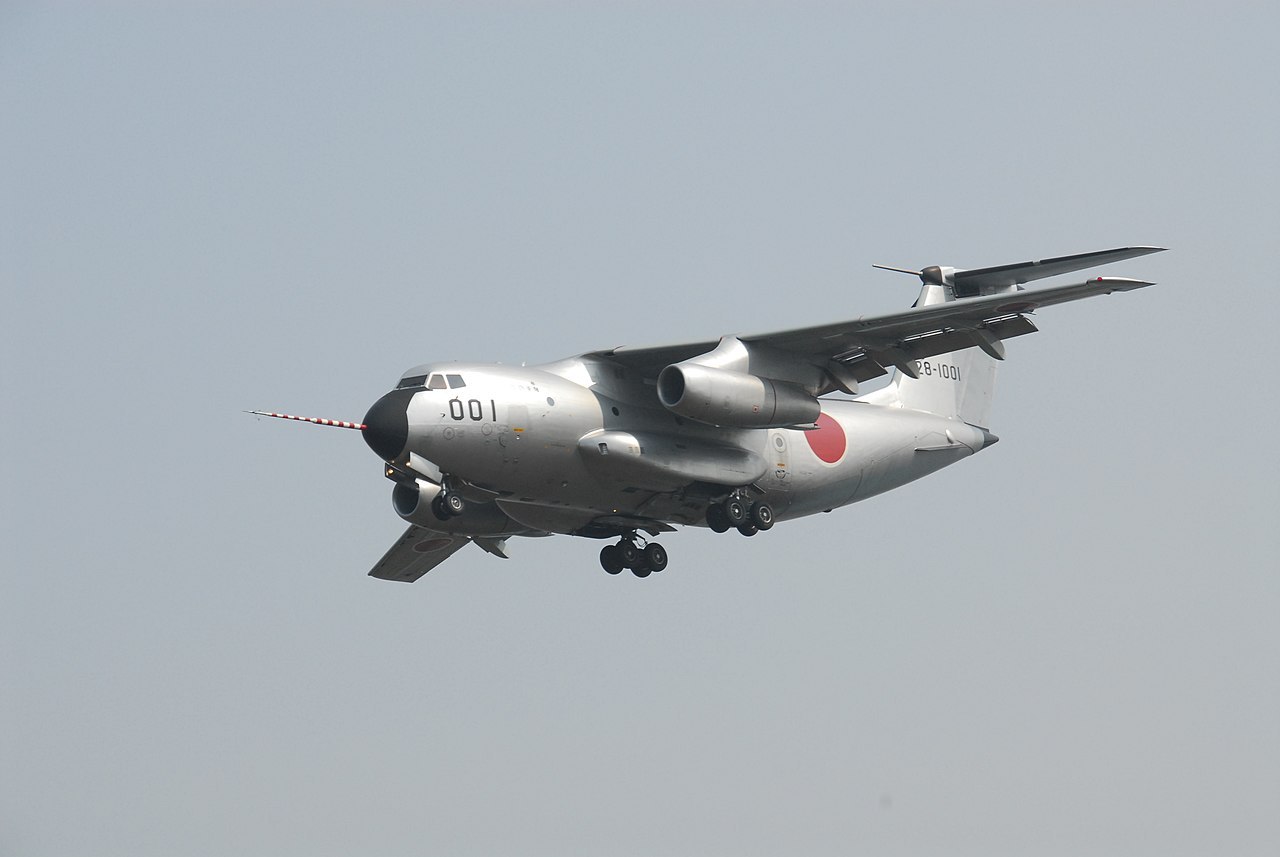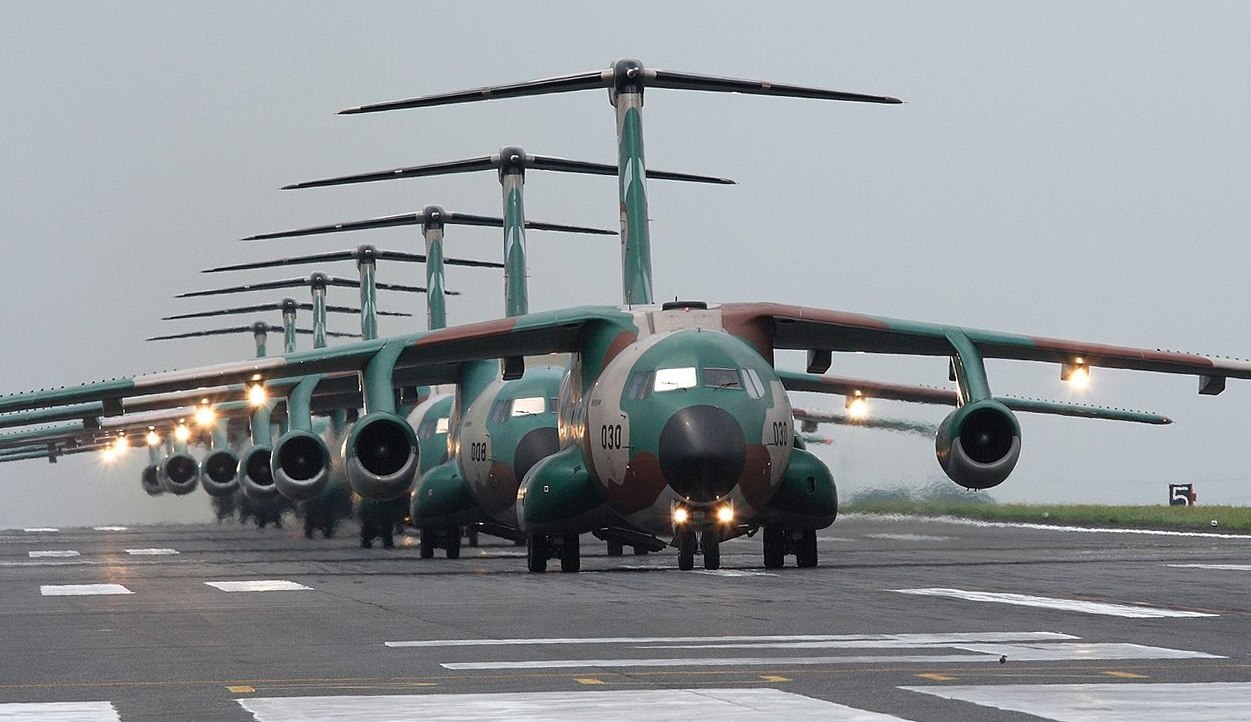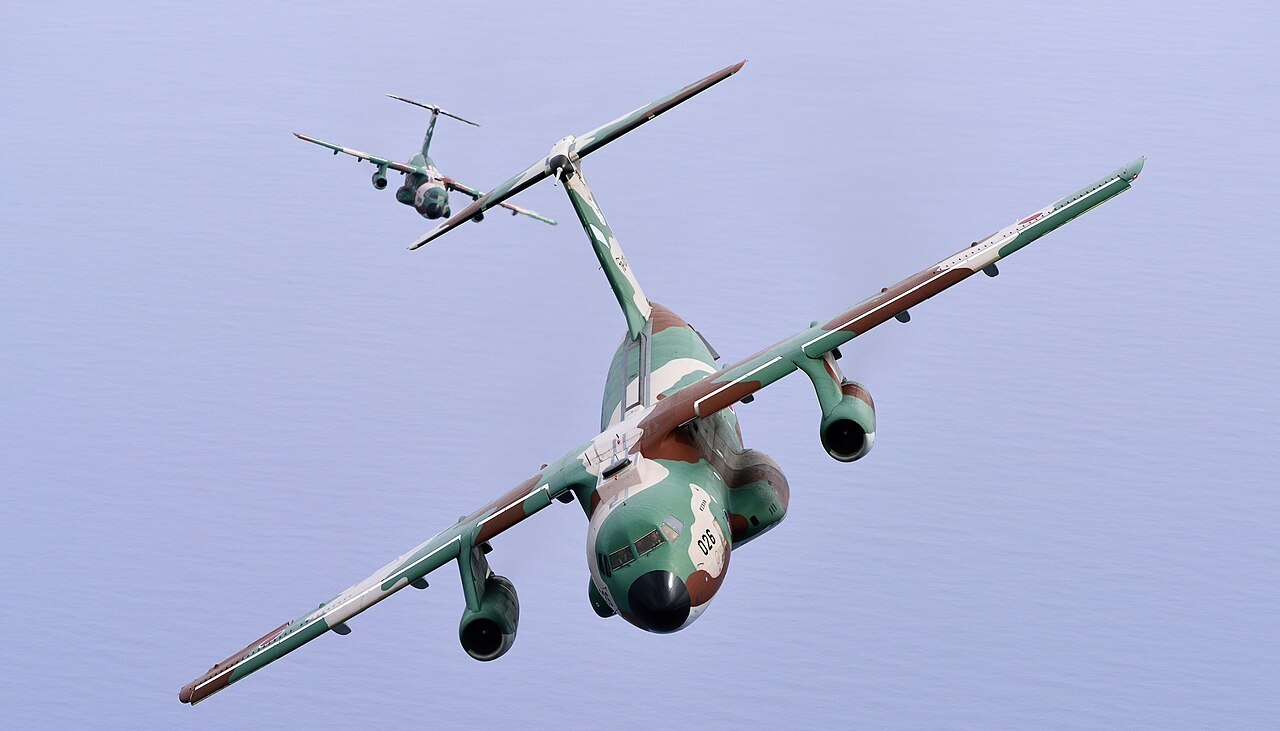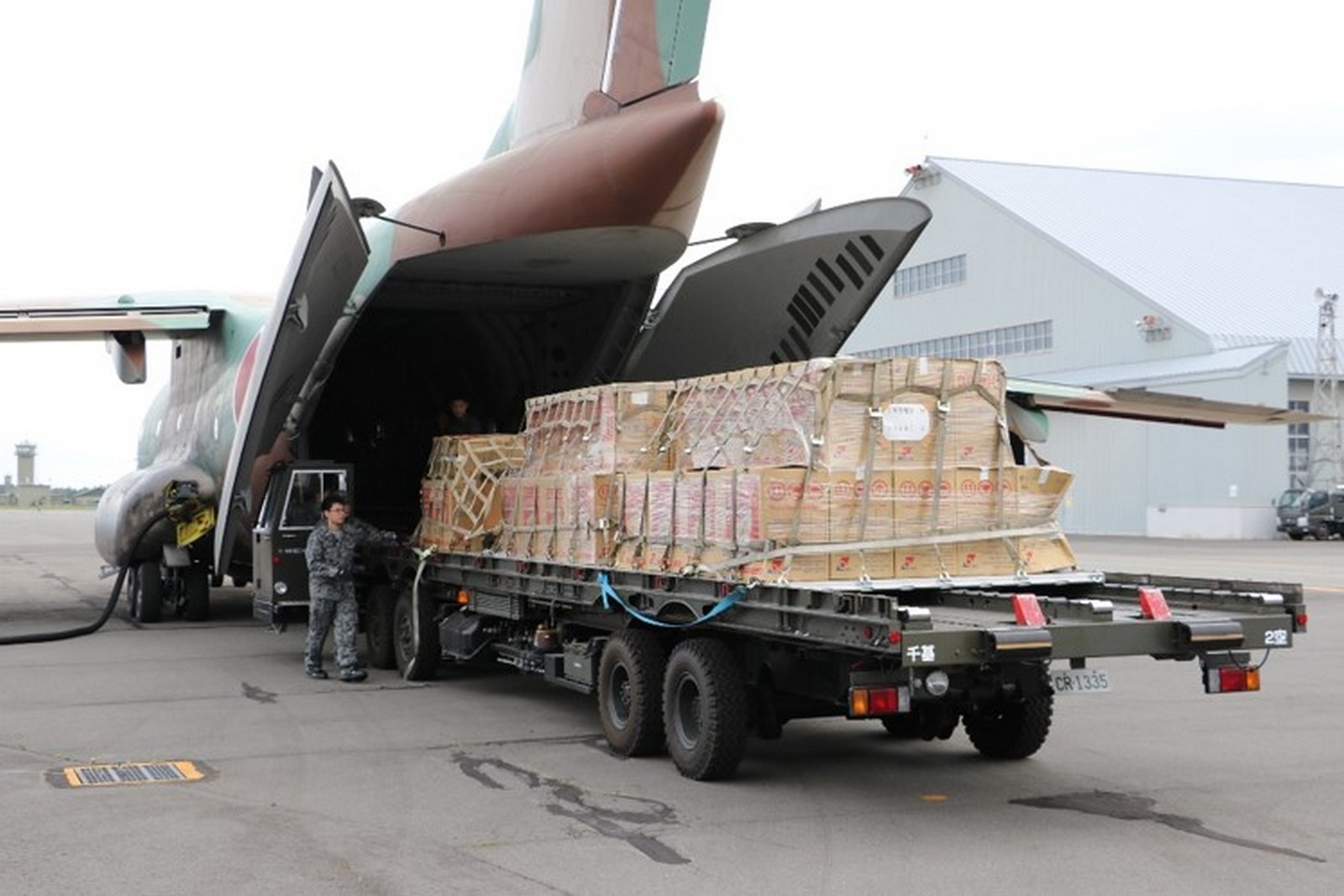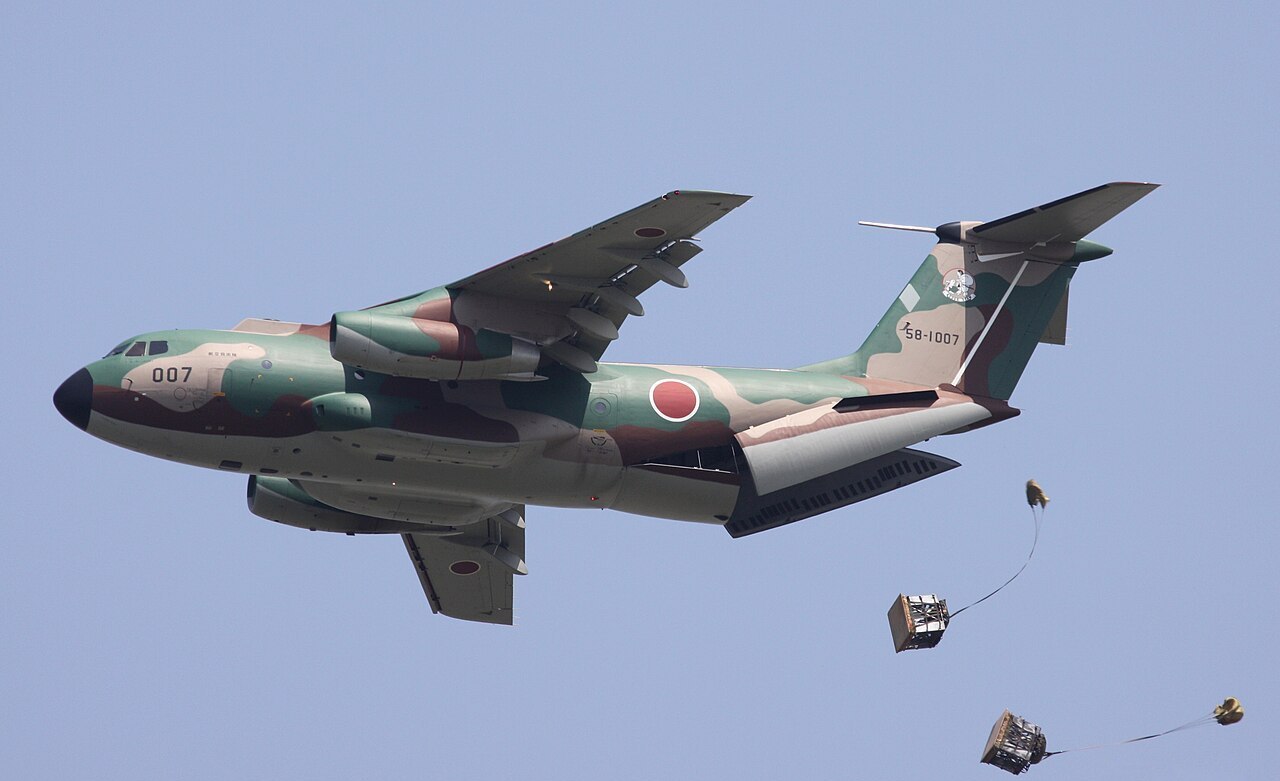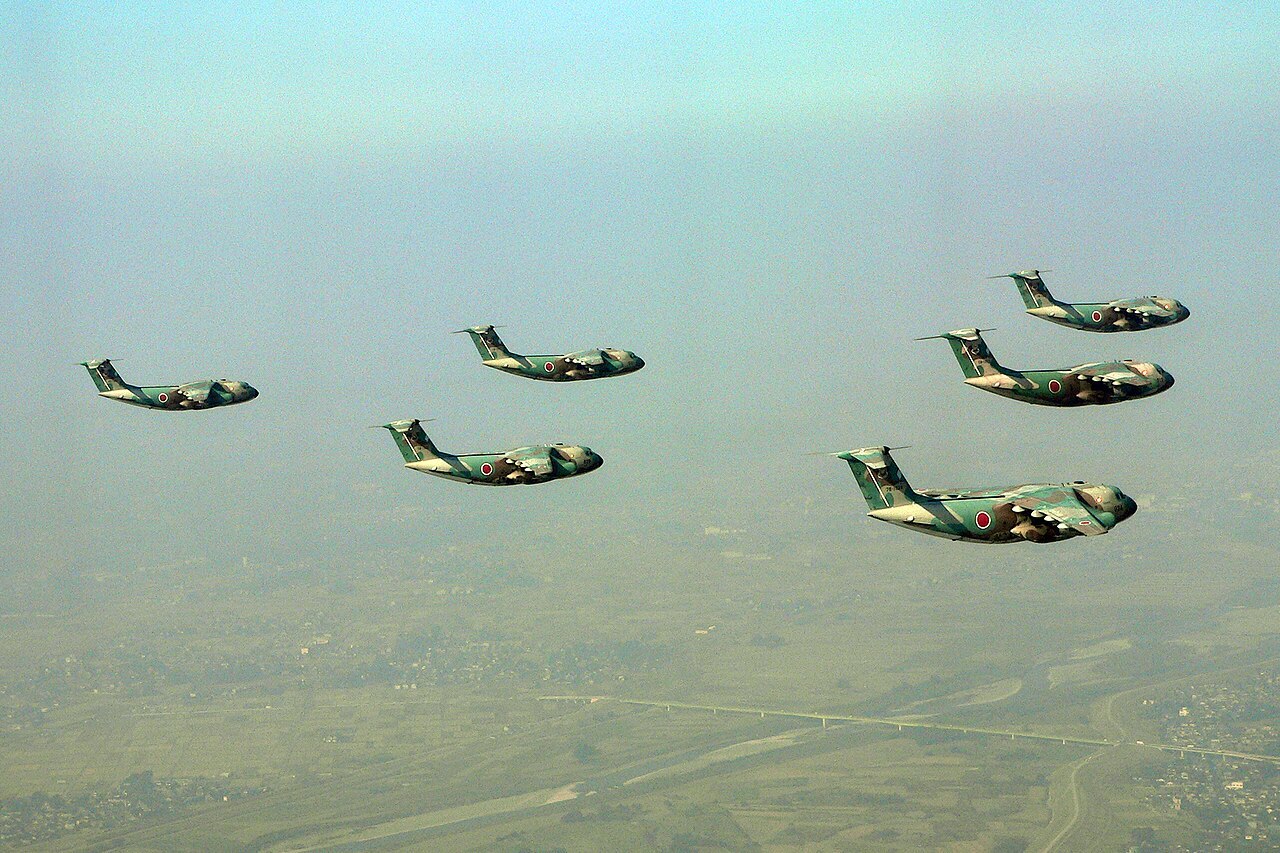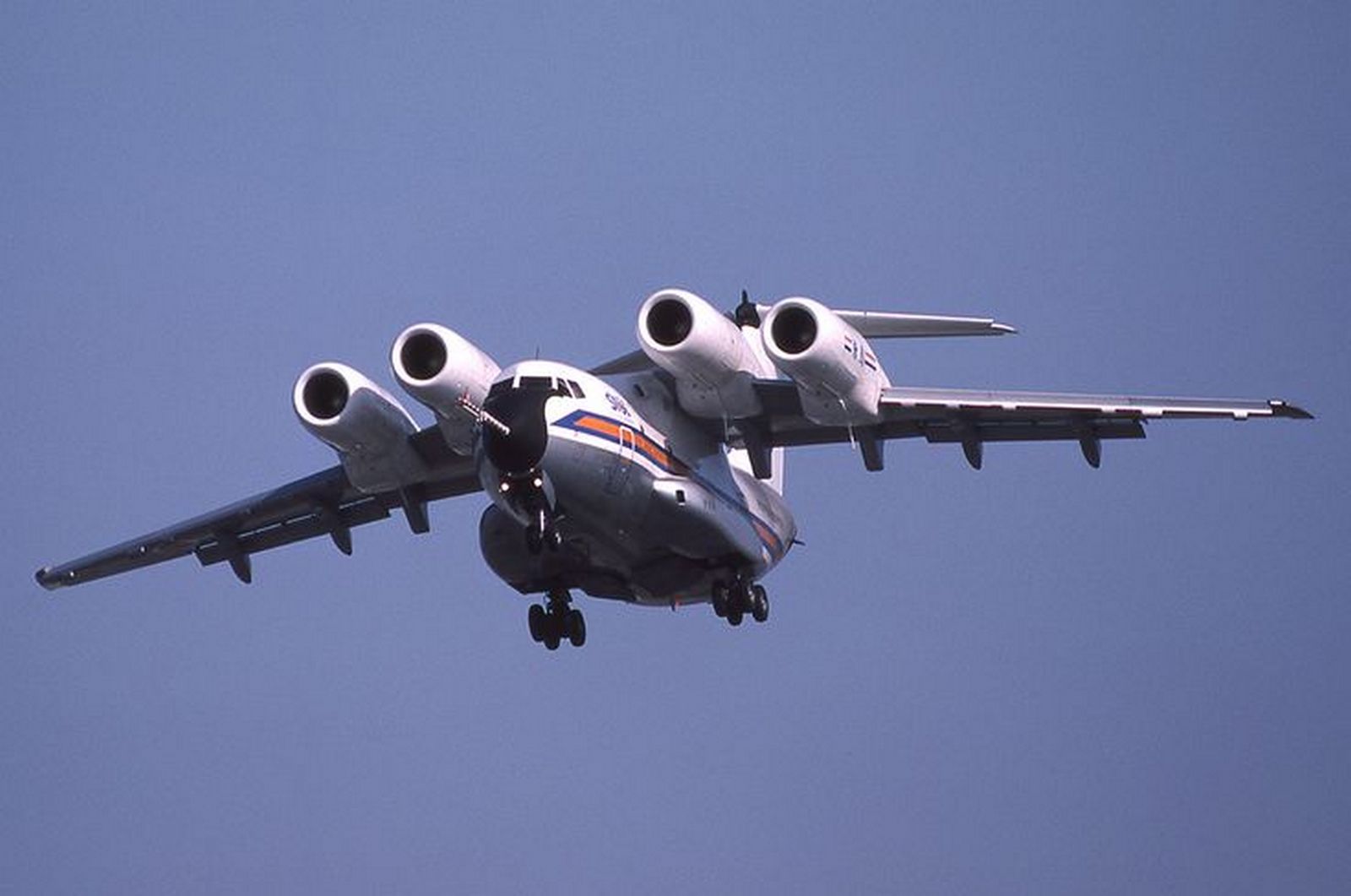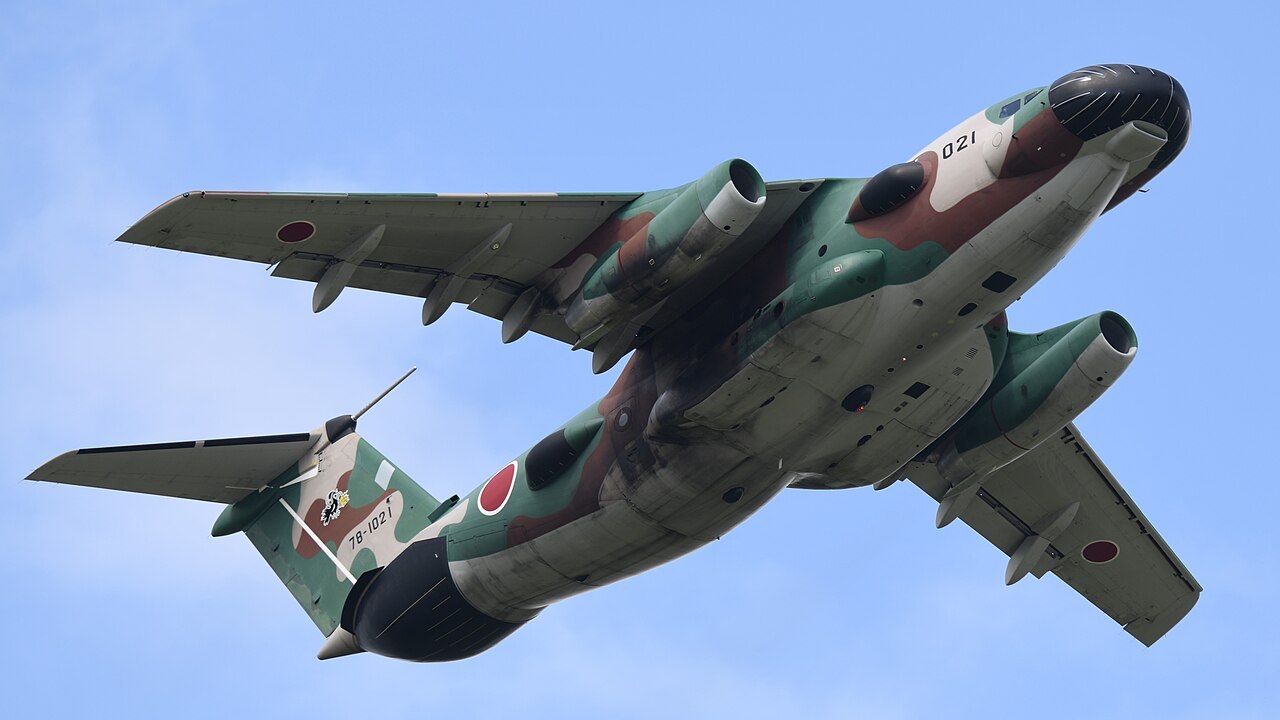55 years of the Kawasaki C-1 military transport aircraft

November 12 marked the 55th anniversary of the Japanese military transport aircraft Kawasaki C-1. On that day in 1970, its first prototype took flight. Thus, Japan became the second country in the world after the United States to develop and deploy a serial production jet military transport aircraft.
Development of the C-1 began in the mid-1960s. At that time, the Japan Air Self-Defense Force was still operating American C-46 Commando piston transport aircraft from World War II (there is a separate article about it on our website). Seeking to replace this hopelessly outdated equipment, the government decided not to turn to foreign manufacturers, but to rely on domestic ones. A contract for the creation of a new aircraft was signed with the Nihon Aircraft Manufacturing Corporation (NAMC) consortium. Its management appointed the multidisciplinary company Kawasaki Heavy Industries, which was part of the consortium, as the general contractor. A number of other participants in this conglomerate were also involved in the project. For example, the middle and rear parts of the fuselage were built by Mitsubishi Heavy Industries.
The S-1 was equipped with two Pratt & Whitney JT8D-M-9 twin-circuit turbojet engines with a thrust of 6575 kgf each, which were also manufactured by Mitsubishi under an American license. The aircraft was 29 m long, with a wingspan of 30.6 m, a maximum take-off weight of 38,700 kg, a maximum speed of 806 km/h, and a practical range of 1,300 km when fully loaded. It could carry 60 soldiers in full gear or 8,000 kg of cargo.
Serial production of the C-1 was completed in 1979, with a total of 31 units built. They left the factory in their basic configuration, but several were later converted, including into the Asuka/QSTOL short takeoff and landing flying laboratory and the EC-1 electronic warfare training aircraft.
The Kawasaki C-1 was used exclusively in Japan, where it became the main military transport aircraft. Its operation significantly improved the operational capabilities of the small Self-Defense Forces. The crews highly appreciated their aircraft, particularly for their ease of piloting and reliability (only one aircraft crashed).
In March 2025, the C-1 was retired. It was replaced by the much more advanced C-2, also developed by Kawasaki.

 Fan-page
Fan-page Youtube
Youtube TikTok
TikTok Aviamuseum
Aviamuseum State Aviation Museum
State Aviation Museum
